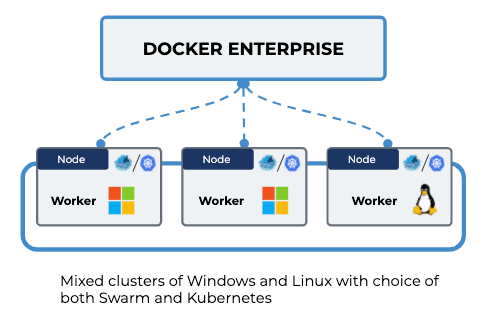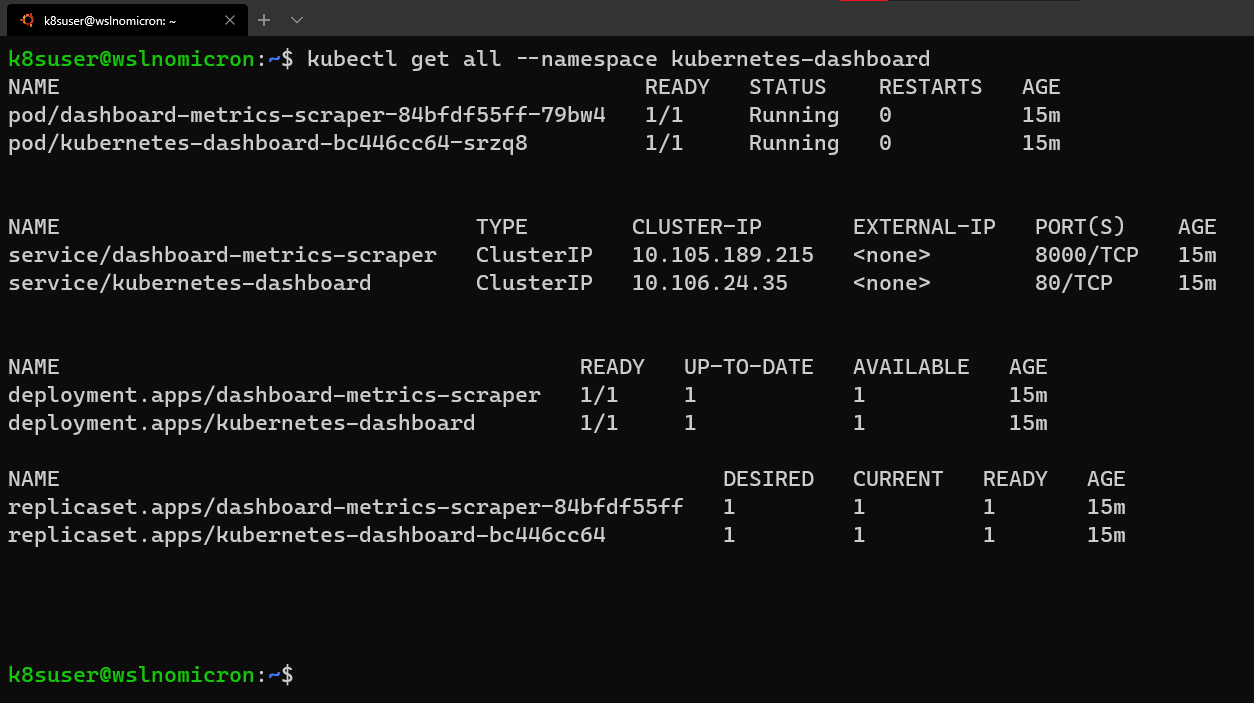

- DOCKER FOR WINDOWS KUBERNETES CLUSTER INSTALL
- DOCKER FOR WINDOWS KUBERNETES CLUSTER UPGRADE
- DOCKER FOR WINDOWS KUBERNETES CLUSTER WINDOWS 10
- DOCKER FOR WINDOWS KUBERNETES CLUSTER DOWNLOAD
Usages: ['digital signature', 'key encipherment',

Next we ask the Kubernetes API to sign the CSR.Ĭreate a cert-sign-request.yaml kind: CertificateSigningRequest Openssl req -new -key myuser.key -out myuser.csr -subj "/CN=myuser/O=myusergroup" We then authenticate using the signed certificate. We ask the cluster's CA to certify the certificate. We first create the private key for a user and a certificate signing request. I decided to focus on X509 client certificates. There are a few methods available to authenticate with the cluster. Users cannot be added to a cluster through an API call, so user accounts have to be externally managed and then authenticated by the cluster. Setting up a user and authenticating with Kubernetes If you are not familiar with RBAC there are many fantastic resources which explain RBAC fundamentals which are worth reading via a quick Google. Kubernetes RBAC (Role based access control) is a Kubernetes resource which allows us to define policies to determine which actions specific users are allowed to execute at cluster and namespace level. If you have Windows subsystem for Linux installed you can use this as the docker backend which provides better performance than Hyper-V.
DOCKER FOR WINDOWS KUBERNETES CLUSTER WINDOWS 10
This started as a dump of my notes exploring this but thought it might be useful for others.ĭocker desktop is a quick and easy way to run a Kubernetes cluster locally on Windows 10 allowing Windows users to experiment with Kubernetes. If you get errors then we need to look into it, because you'll need your own cluster for every part of the course.Menu Experimenting with Kubernetes RBAC on Windows 10 with docker desktop 12 December 2020 Your details may be different - that's fine. I'm using Docker Desktop and mine says: NAME STATUS ROLES AGE VERSION Whichever setup you use, you should be able to run this command and get some output about your cluster: kubectl get nodes

If you're not already using Kind use k3d instead If you're already using Kind, use this setup which is tweaked for the labs: kind create cluster -name k8s -config setup/kind.yaml OR Kind - Linux An alternative Dockerized Kubernetes setup
DOCKER FOR WINDOWS KUBERNETES CLUSTER UPGRADE
K3d cluster create k8s -p syntax uses the latest k3d command (v5) previous releases used a different syntax so you'll need to upgrade to v5.
DOCKER FOR WINDOWS KUBERNETES CLUSTER INSTALL
You need to install Docker, then k3d and then create a cluster: curl -fsSL | sh You can use k3d on macOS and Windows too - but Docker Desktop is easier. It runs a whole Kubernetes cluster inside a Docker container :) On Linux k3d is a lightweight Kubernetes distribution with a good feature set. OR k3d - Linux Running Kubernetes inside a container When the Docker logo and the Kubernetes logo in the UI are both green, everything is running. In the settings Windows select Kubernetes from the left menu and click Enable Kubernetes:ĭocker downloads all the Kubernetes components and sets them up. Right-click that whale and click Settings: On Windows 10 the install may need a restart before you get here. When it's done, run the Docker app and you'll see the Docker whale logo in your taskbar (Windows) or menu bar (macOS).
DOCKER FOR WINDOWS KUBERNETES CLUSTER DOWNLOAD
The download and install takes a few minutes. If you're on macOS or Windows 10 Docker Desktop is the easiest way to get Kubernetes: Git is a free, open source tool for source control:

We'll also use Git for source control, so you'll need a client on your machine to talk to GitHub. Kubernetes clusters can have hundreds of nodes in production, but you can run a single-node cluster on your laptop and it works in the same way. Kubernetes Course Labs Running a Local Kubernetes Cluster


 0 kommentar(er)
0 kommentar(er)
